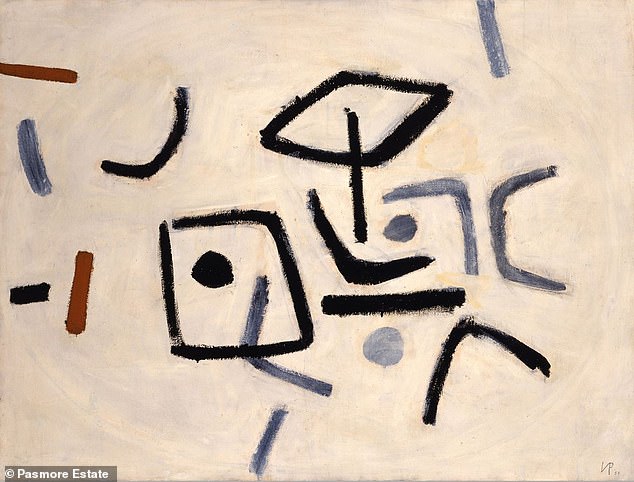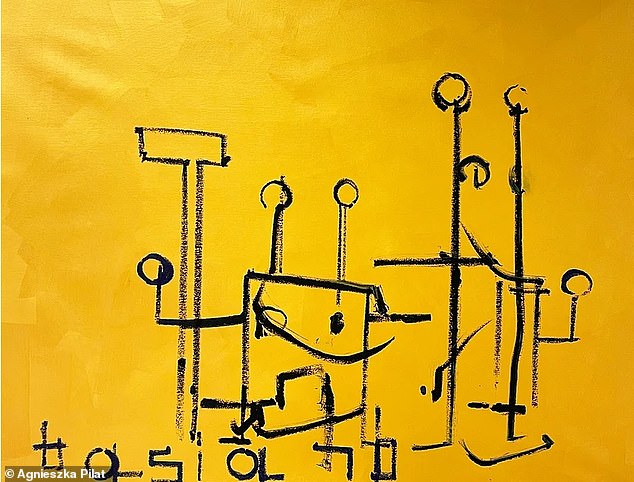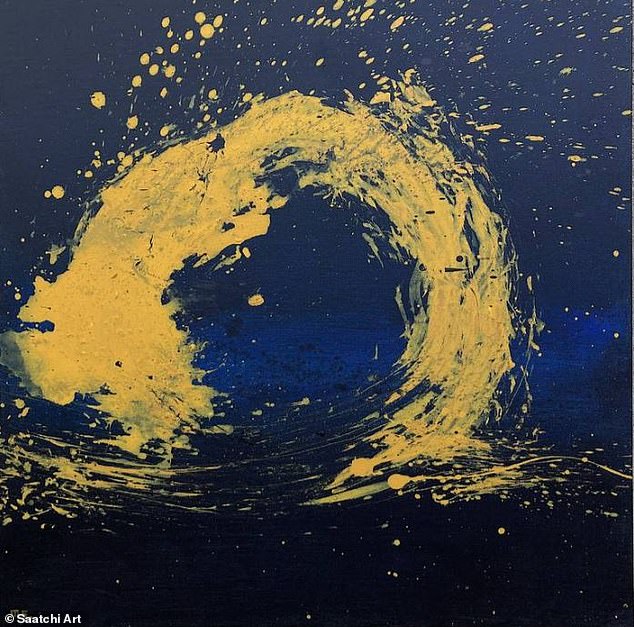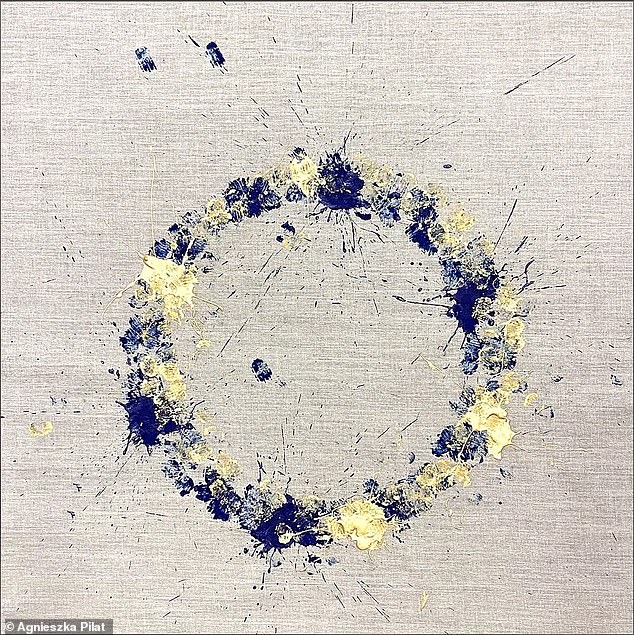- Robot dogs are given free rein to create abstract art that is ‘playful’
- A Polish artist trained the robots for four months, comparing them to children
- The robots’ paintings are featured at a four-month exhibit in Australia
- READ MORE: Robot dog uses ChatGPT to talk in an English accent
A ‘robot whisperer’ has used her art skills to train a new generation of painters – AI-powered robot dogs.
Agnieszka Pilat spent months teaching three four-legged machines developed by Boston Dynamics to hold a paintbrush in their ‘mouths’ and move them across a large canvas, turning the paint into abstract shapes.
Pilat, from Poland, recently opened a new exhibit titled ‘Heterobota’ featuring 36 autonomous paintings that resemble human artworks currently sold for more than $2,000 at auction.
The robots created artworks inspired by artists like Jean-Michel Basquiat’s angular style of artwork and Cy Twombly’s calligraphy-driven paintings – but one of the pieces looks like one done by Mutlu Ertac that is going for $2,900.
Pilat is an in-residence artist for SpaceX and works with the industrial design team to create paintings focused on the company’s mission to promote space exploration.


SpaceX has no official artist-in-residence program, but Pilat said she wanted to work with the company to ‘give technology a voice.’
‘It took a bit of convincing, finding the right connections, and presenting a vision that aligned with a space exploration mission,’ she told Business Insider.
Three spots named Basia, Omuzana ‘Vanya,’ and Bunny began their four-month residency at the National Gallery of Victoria (NGV) in Melbourne, Australia last month. The exhibit will run through April 7.
NGV’s exhibition space has cubes with QR codes telling the robot dogs where they are in the room while they’re painting.
And there is also a special place inside the museum for the three robodogs to ‘sleep’ and recharge.
‘As for the order in which they work and the content of the message, that’s all machine-generated, and I don’t control or supervise it,’ Pilat told Business Insider.


Although Pilat works with the robots daily, she told The Guardian that she still doesn’t fully understand them, so she works with Boston Dynamics engineers to shape the robot dogs’ personalities.
Together, Pilat and the engineers use AI, software, and machine learning to train the robots and even use Basia as a surrogate pet, frequently taking it for walks around New York.
Basia is the ‘serious one,’ Pilat told The Guardian, adding that the robot dog will paint about one canvas every three days, while Vanya is the ‘mother of the group’ and paces around the studio.
Meanwhile, Bunny’s vanity often wins out, and it will continuously pose in front of a wall designed for selfies.


Pilat said she always wanted to work with artificial intelligence to create a new genre of artwork that she hopes will be looked at in years to come through the same lens that historians look at cave drawings.
‘I like to think of these paintings as possibly ancient scrolls or cave drawings,’ Pilat told Business Insider.
‘We might be witnessing the birth of a new civilization and, with it, a new language; perhaps the first attempt at communication,’ she added.
It took Pilat four months to work with the robot dogs, but she has previously said the mechanical Picassos were not intended to replace human creators.
That is because their artwork is more comparable to a kindergartener learning to draw, adding that there is ‘a sense of spontaneity and playfulness in the paintings,’ she said.


Regarding her experience with the robot dogs, Pilat said on her website: ‘Working in close contact with a robot gives the impression of an encounter with another mind; it seems that the robot has agency.’
She continued: ‘This experience contradicts expectations about machines operating reliably and predictably.
‘When a robot fails at a task repeatedly, a human observer may even feel a pang of empathy.
‘That has been my experience with Digit and Spot. Paradoxically, they have taught me about humanity.’
Growing up in Łódź, Poland, Pilat said listening to Radio Free Europe with a group of adults in a locked room gave her a unique appreciation of technology that others may not have.
‘Technology was giving us hope, to my parents,’ Pilat told The Guardian.
‘I truly feel technology has always been there for me. And now there’s lots of unease towards technology, I feel a debt to repay my old friend.’
Dailymail.com reached out to Pilat and the National Gallery of Victoria for comment.
This post was originally published on this site be sure to check out more of their content





